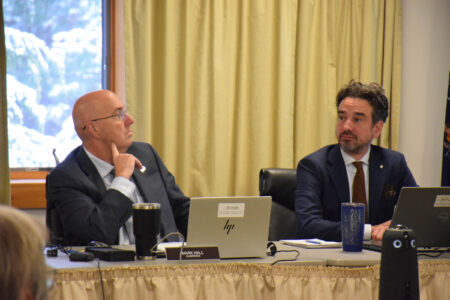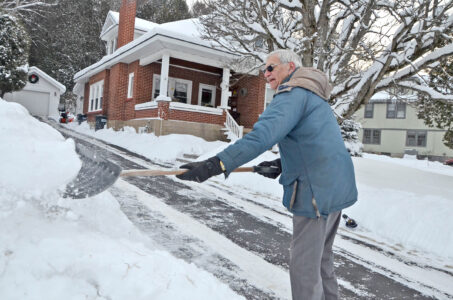Teach languages in elementary? Massena schools look at Lake Placid’s example
Young minds are better at learning languages, and research shows it helps fluency in English. But qualified teachers are hard to find in the North Country, and schools fear taking time from English and math.
MASSENA — Some Massena Central School Board of Education members say they’d like to see a foreign language introduced at the elementary level, but Superintendent Patrick Brady said that may be easier said than done.
At the request of board member Robert LeBlanc, and as part of the district’s goals this year, Brady had explored “options to further integrate cultural experiences at the elementary level, including exposure to foreign languages.”
He said he worked with district clerk Ashley Snyder and Nicole Charleson, the district’s director of curriculum, instruction and assessment, and collaborated with building principals on the request.
He said they found only one program locally, now in its 10th year in Lake Placid, that provides some French and Spanish instruction on a rotational basis with a teacher who is fluent in both languages.
“It’s the closest we have for actually a teacher teaching the language,” Brady said. “If you look at the research, some of them are providing language software that has various games and activities to expose the students to the language. There’s a variety of ways some of the schools get at this.”
He said research has shown some of the benefits of offering a foreign language at the elementary level.
“Particularly, you see this as a common theme, that the students in elementary have shown a little bit more mental flexibility, creativity, openness to language and culture. Then, as they move on, it provides a longer sequence of instruction which helps them with their linguistics and fosters a better understanding of culture,” Brady said.
However, there are challenges.
“If you’re looking at hiring a teacher who’s certified, it’s very challenging to do in this market,” he said, noting they had one individual from another school district who applied the last time they sought a certified language teacher.
“If we don’t go in that direction, primary school teachers are not well trained to teach a foreign language. There would need to be significant professional development to do that,” he said.
Another challenge is how to integrate a program into the curriculum. Brady said one of the largest barriers is integrating it into an already packed schedule, “particularly when we’ve been struggling with students meeting standards in ELA (English language arts) and math.”
Other programs like physical education, art and music also require a certain number of hours, he said.
Brady said that if the district opted to move forward, some of the logical steps would be to visit schools that have instruction, to purchase literature with embedded language and culture, and to purchase software programs for teachers who are interested in integrating it into their classrooms. They could also have high school students visit the elementary schools to do project-based foreign language lessons.
Board member Patricia Murphy agreed. She said that, in attending an alternative school, she had started learning a second language in kindergarten.
“When I got to high school, taking modern language was a snap. I already had all the fundamentals. It was just more learning about the grammar,” she said. “So why not try something where maybe the older students can flex their little muscles, too, and show what they know?”
Board member Susan Lambert said she felt it was important to expose the younger students to a foreign language at the elementary level.
“I know it’s incredibly challenging, but the human brain is set up so that it can understand language early on,” she said.
“I think the research is clear that there are some strong benefits to introducing the language at the elementary level. Some of the challenges, though, we would definitely need to have buy-in from staff at a time when they’re coming off the pandemic and we’re trying to raise standards in ELA and math,” Brady said.
Senior Logan Benoit, the student representative on the school board, said he didn’t begin learning Spanish until eighth grade while living in Virginia.
“That was just too late for me. I did OK in Spanish II and III here in New York state when I moved here. But one of the main reasons why I didn’t move on to IB (International Baccalaureate) Spanish and why I’m not a full IB student was mainly because of foreign language. It was just starting too late, and it wasn’t a concept that I could grasp,” he said.
Board member Kevin Perretta said his concern, like Brady’s, is ensuring students are meeting the standards in their regular curriculum. He said he had heard concerns from many teachers that some students were not learning at their grade level, whether it is their reading level or math skills.
“I almost would be cautious to put too many resources into that on a mainstream level. Maybe an extracurricular offering until we catch that up,” he said. “There’s maybe some kids that might be interested in it, but at what cost of taking away the resources for the mainstream things we have to perform. We’re having a hard time keeping up, and I can’t speak for you guys, but I would say we’re not doing the greatest job of keeping them up with the basics with all of the social emotional issues that we have, and this is just going to add to the pile.”




